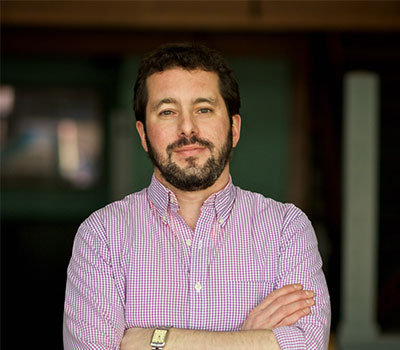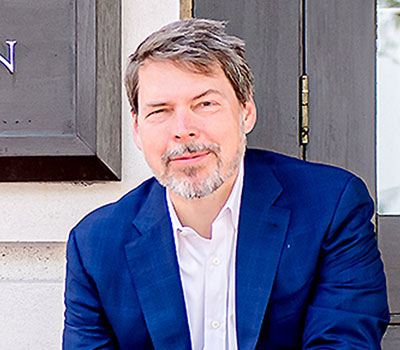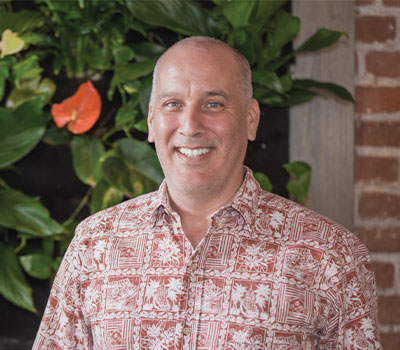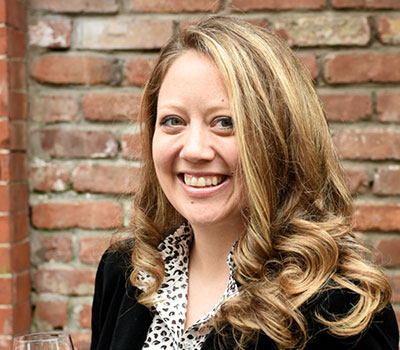Los Angeles
Bar Avalon/Eve Bottle Shop
Photo by Mark Griffin Champion
Bar Avalon in a year-long hibernation.
Los Angeles
Bar Avalon/Eve Bottle Shop
Photo by Mark Griffin Champion
Looking out from the interior of Eve Bottle Shop, the view is partially obstructed by the “blockade” at the front entrance, part of the store’s pandemic restrictions.
Los Angeles
Bar Avalon/Eve Bottle Shop
Photo by Mark Griffin Champion
Bar Avalon and Eve opened in 2019; the wine bar has been closed since March 15, 2020, with patrons directed to the bottle shop.
Portland, OR
Le Pigeon
Scroll down to read more from Andrew Fortgang.
Santa Monica, CA
Cassia
Photo by Mark Griffin Champion
Cassia moved outdoor heaters inside when the restaurant temporarily closed down at the end of November 2020.
Santa Monica, CA
Cassia
Photo by Mark Griffin Champion
The “Wine Room” now serves as an office and break room.
Santa Monica, CA
Cassia
Photo by Mark Griffin Champion
Storage has taken over at the edges of the dining room.
Santa Monica, CA
Cassia
Photo by Mark Griffin Champion
Storage has taken over at the edges of the dining room.
Santa Monica, CA
Cassia
Photo by Mark Griffin Champion
Supplies on hand for takeout include pens that get sanitized between uses.
Los Angeles
République
Photo by Mark Griffin Champion
The dining room at République has become a storage area for tables and heaters.
Los Angeles
République
Photo by Mark Griffin Champion
Handwashing remains as important as ever.
Los Angeles
République
Photo by Mark Griffin Champion
Before the closures, République had communal seating in the dining room. This will change when the restaurant returns to indoor dining.
Los Angeles
République
Photo by Mark Griffin Champion
Half of République’s parking lot is now an outdoor dining room. Some signage remains.
Los Angeles
République
Photo by Mark Griffin Champion
Dining guidelines for guests.
Los Angeles
République
Photo by Mark Griffin Champion
Markers show guests where to wait safely.
Berkeley, CA
Chez Panisse
Scroll down to read more from Jonathan Waters.
Berkeley, CA
Chez Panisse
Photo by Marissa Leshnov
The team at Chez Panisse started a weekly Sunday Market.so the restaurant could continue purchasing from Cannard Family Farm, with which it has maintained an exclusive relationship for over 30 years.
Berkeley, CA
Chez Panisse
Photo by Marissa Leshnov
The market has grown in scale and the restaurant is also regularly purchasing from about a dozen other local, organic farms.
Berkeley, CA
Chez Panisse
Photo by Marissa Leshnov
Wine Director Jonathan Waters has been selling wines from the cellar since the beginning of the pandemic.
Berkeley, CA
Chez Panisse
Photo by Marissa Leshnov
In addition to the Sunday Market, the restaurant has added take-out food several days of the week.
Berkeley, CA
Chez Panisse
Photo by Marissa Leshnov
A shopper, wicker basket in hand, looks over the offerings from the market at Chez Panisse.
San Francisco
A16
Photo by Marissa Leshnov
At the end of the night, the team piles the outdoor trappings along with the takeout and delivery supplies against the chef’s counter.
San Francisco
A16
Photo by Marissa Leshnov
A painted message on A16’s outdoor enclosure thanks patrons for their support. “We cannot say ‘grazie’ enough, but we try to every day,” says Co-Owner Shelley Lindgren
San Francisco
A16
Photo by Marissa Leshnov
Artist Kelly Tunstall painted the walls of A16’s parklet in June 2020.
San Francisco
A16
Photo by Marissa Leshnov
Like a number of other restaurants, A16 offers its menu and wine list via QR code, to be as contactless as possible.
Baltimore, MD
Cinghiale
Scroll down to read more from Tony Foreman.
San Francisco
Delfina Pizzeria
Photo by Marissa Leshnov
This newly-tagged parklet was built under the SF Shared Spaces Program. It’s outfitted with AstroTurf, heat lamps, cubicles for each party and “landing tables” against each dining table to allow distance between the servers and the diners.
San Francisco
Delfina Pizzeria
Photo by Marissa Leshnov
A staff member enters orders during service; in Fall 2020, Delfina implemented mandatory biweekly testing for its staff to contain potential outbreaks given the volume of guest- and delivery-driver-contact throughout the night.
San Francisco
Delfina Pizzeria
Photo by Marissa Leshnov
The take-out window was added after the pandemic began.
San Francisco
Delfina Pizzeria
Photo by Marissa Leshnov
As a pizza restaurant, Delfina is well-positioned for a take-out model.
San Francisco
Delfina Pizzeria
Photo by Marissa Leshnov
Six foot markers help guests maintain a responsible distance.
San Francisco
Californios
Photo by Marissa Leshnov
Californios closed its kitchen during 2020, instead offering wine kits for pickup or delivery.
San Francisco
Californios
Photo by Marissa Leshnov
The restaurant moved in the midst of the pandemic, taking over a space with an outdoor area larger than its old dining room. Californios resumed dining service in March, 2021.
San Francisco
Californios
Photo by Marissa Leshnov
Wine Director Charlotte Randolph packs deliveries in the under-construction kitchen.
San Francisco
Californios
Photo by Marissa Leshnov
Randolph has spent more on Champagne this year than she normally would (“I need to treat myself too.”) She’s been able to keep revenue flowing for distributors and wineries and made a concerted effort to represent California wineries in her wine club.
San Francisco
Californios
Photo by Marissa Leshnov
The wine cellar at the new site was once a private dining room.
Honolulu, HI
Fête Hawaii
Scroll down to read more from Chuck Bussler.
Austin, TX
Nixta Taqueria
Photo by Sarah Karlan
A banner company supplied free “Open For Take Out” banners to local Austin restaurants, including Nixta
Austin, TX
Nixta Taqueria
Photo by Sarah Karlan
When the pandemic hit, Nixta stopped serving in its 600-square-foot interior dining room, moving to online orders and, eventually, setting up outdoor dining.
Austin, TX
Nixta Taqueria
Photo by Sarah Karlan
The altar to La Virgen de Guadalupe includes hand sanitizer.
Austin, TX
Nixta Taqueria
Photo by Sarah Karlan
Originally counter service only, Nixta has pivoted to curbside takeout and to-go orders. The dining room remains closed.
Austin, TX
Nixta Taqueria
Photo by Sarah Karlan
Guests can order food and drink at the outdoor bar.
Austin, TX
Nixta Taqueria
Photo by Sarah Karlan
A line cook boxes up to-go orders; take-out currently accounts for half of Nixta’s business.
Austin, TX
Nixta Taqueria
Photo by Sarah Karlan
A covered patio and open backyard provide seating for “dine-in” guests.
Austin, TX
Nixta Taqueria
Photo by Sarah Karlan
Chef Edgar Rico lends his name to Nixta’s tagline “Aquí comes rico.”
Austin, TX
Jack Allen's
Photo by Sarah Karlan
A light shines against a wall of the prep area, near the staff entrance of Jack Allen’s Kitchen in Austin, TX. Staff members must undergo a screening before entering.
Austin, TX
Jack Allen's
Photo by Sarah Karlan
Dividers cordon off the cocktail booths; when possible, guests are seated in every other booth to increase distance.
Austin, TX
Jack Allen's
Photo by Sarah Karlan
Preservice meetings review daily specials and include reminders of COVID protocols.
Austin, TX
Jack Allen's
Photo by Sarah Karlan
Stations are placed 6’ apart to maintain distance in the kitchen.
Austin, TX
Foreign & Domestic
Photo by Sarah Karlan
A server walks to the tented patio at Foreign & Domestic.
Austin, TX
Foreign & Domestic
Photo by Sarah Karlan
Chef Sarah Heard plates dishes for guests from behind a plexiglass divider, installed after the pandemic began.
Minneapolis, MN
Spoon and Stable
Scroll down to read more from Ben Dale.
NYC
Clay
Photo by Victor Llorente
At Clay, Wine Director Gabriela Davogustto chose to move through inventory during the pandemic as shown by the sparse wine racks.
NYC
Clay
Photo by Victor Llorente
Diners and servers alike are bundled up against the cold.
NYC
Clay
Photo by Victor Llorente
The kitchen “plates” dishes in to-go containers
NYC
Clay
Photo by Victor Llorente
The outdoor dining enclosure after a snowfall.
NYC
Clay
Photo by Victor Llorente
Davogustto pours wine for a table of masked diners.
NYC
The Tyger
Photo by Victor Llorente
The bar at The Tyger includes hand sanitizer at every prep station and tongs for each garnish.
NYC
The Tyger
Photo by Victor Llorente
The CDC and DOH recommend that drink runners wear plastic gloves to bus used glasses, and to change them after coming into contact with guests.
NYC
The Tyger
Photo by Victor Llorente
In lieu of any indoor service, The Tyger used its sizable sidewalk frontage to build an outdoor greenhouse open at the sides.
NYC
The Tyger
Photo by Victor Llorente
Chefs don PPE and are not permitted to share tools.
NYC
The Tyger
Photo by Victor Llorente
Servers try a new wine by the glass before their shift. Masks are kept at chin level to cover up between sips.
NYC
The Tyger
Photo by Victor Llorente
The Tyger provides custom masks for all staff members. Guests are required to wear a mask unless seated.
NYC
Hearth
Scroll down to read more from Christine Wright.
NYC
Hearth
Photo by Victor Llorente
Hearth’s private dining room now provides a window display for retail wines and a production area for the meals the team prepares for World Central Kitchen.
NYC
Hearth
Photo by Victor Llorente
Chef de Cuisine Ben Fadling, foreground, and Sous Chef Ned Denton, center.
NYC
Hearth
Photo by Victor Llorente
General Manager Christine Wright (left) converted the bar area into a retail shop, selling wines, pastries, cookbooks and batched cocktails.
NYC
Hearth
Photo by Victor Llorente
A guest looks over the menu inside one of Hearth's heated outdoor dining enclosures.
NYC
Hearth
Photo by Victor Llorente
The heated enclosures stayed up through Easter, when they were replaced by large umbrellas.





